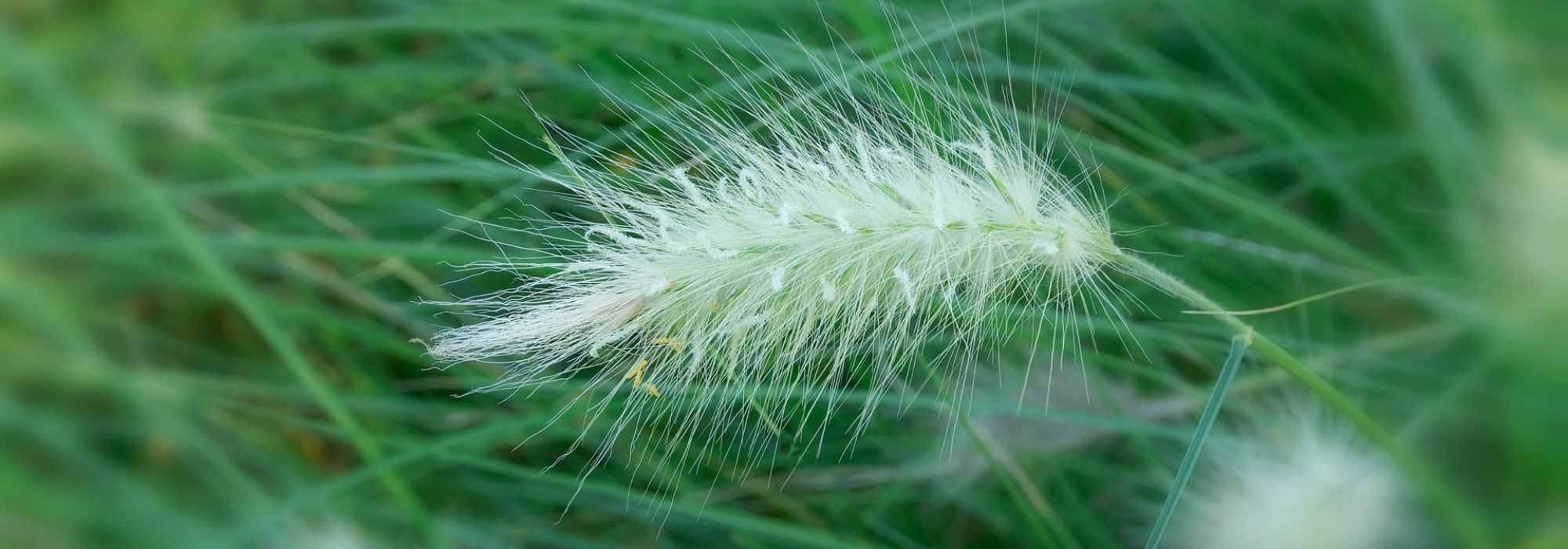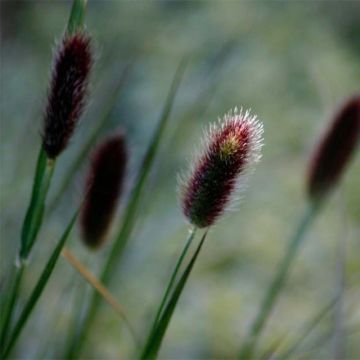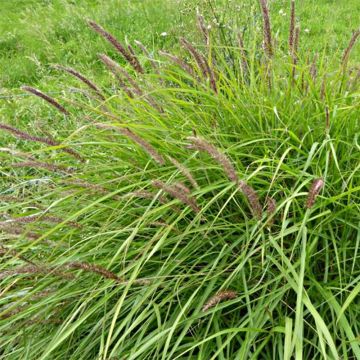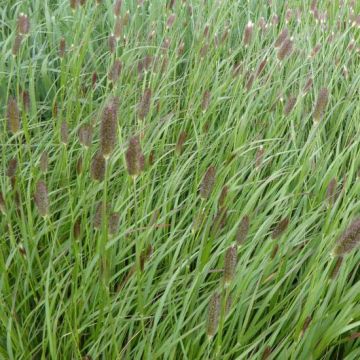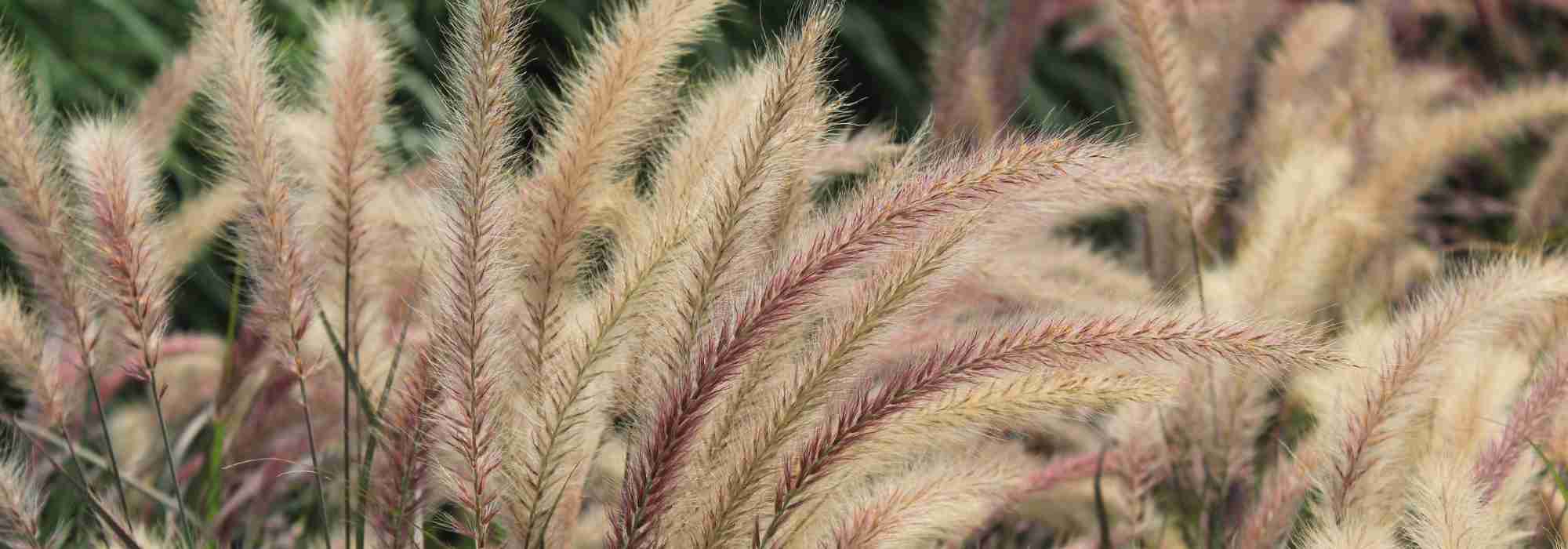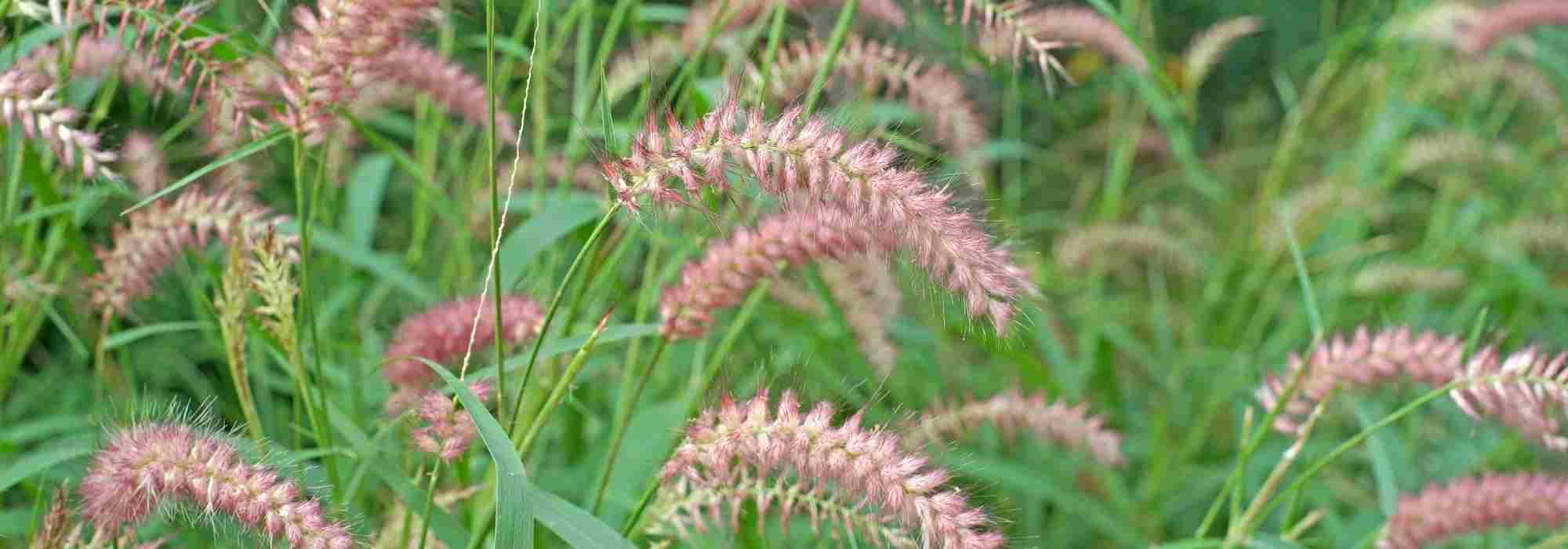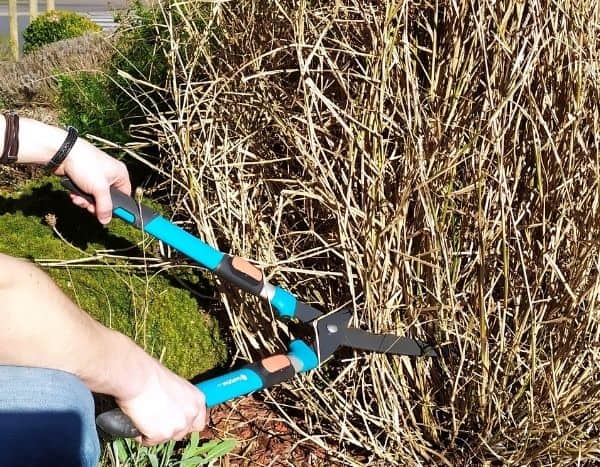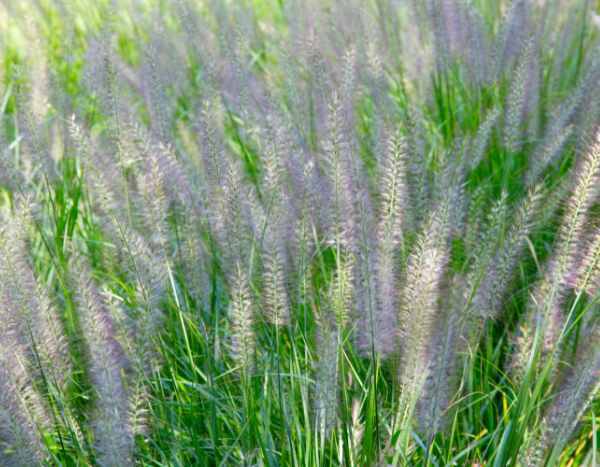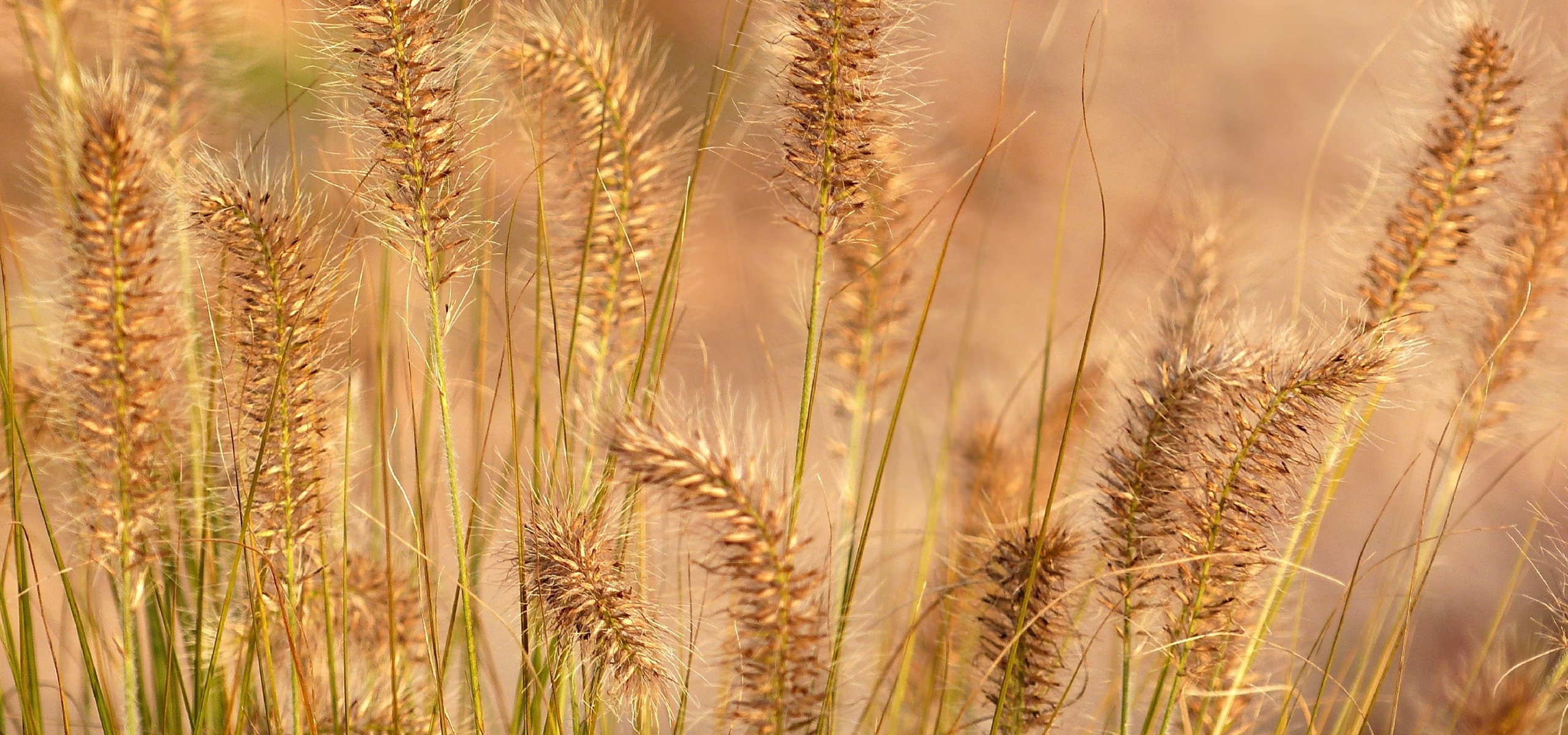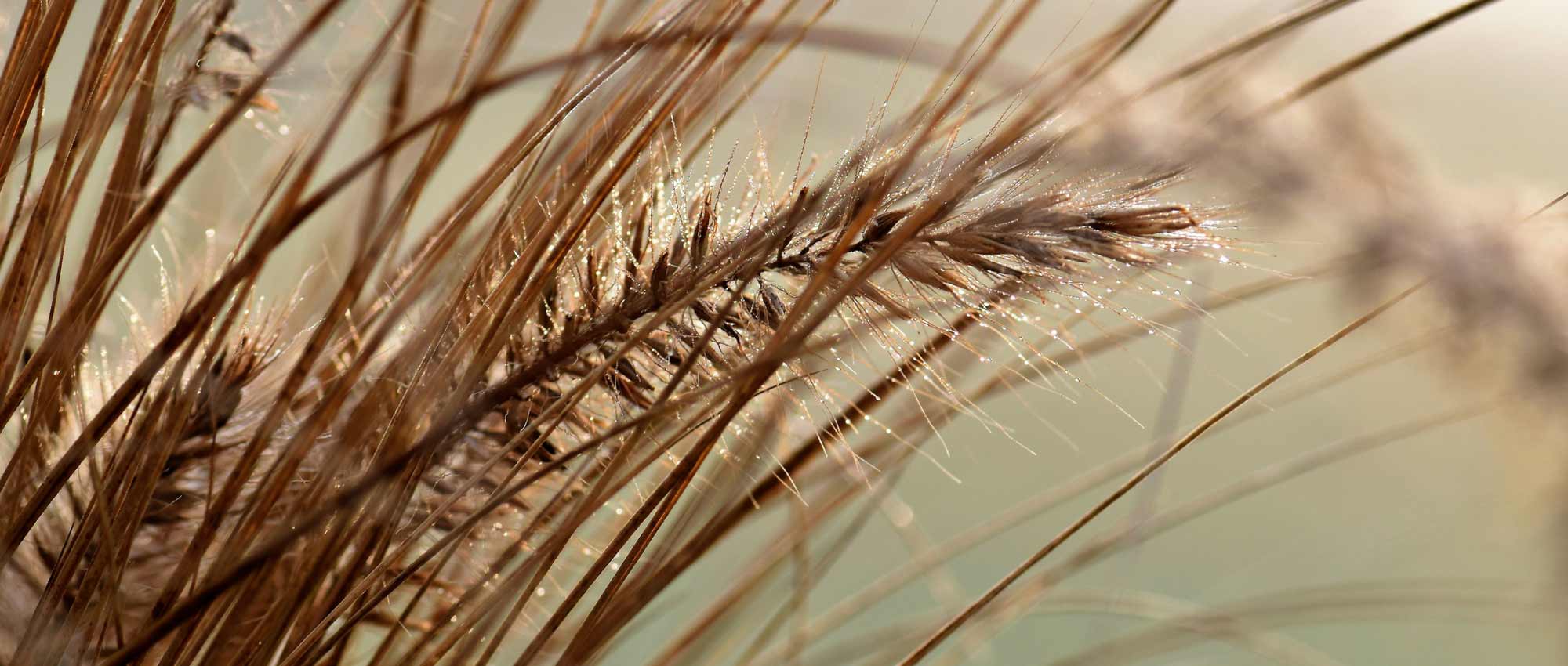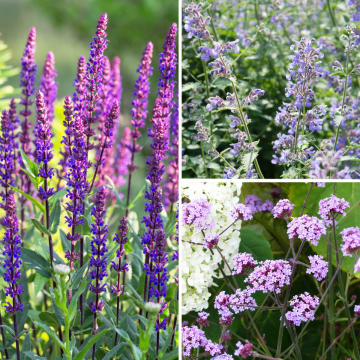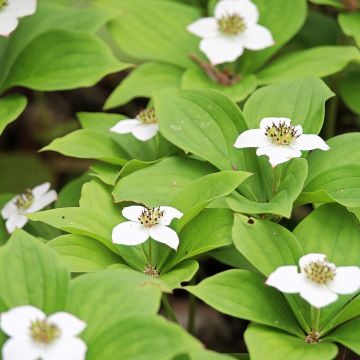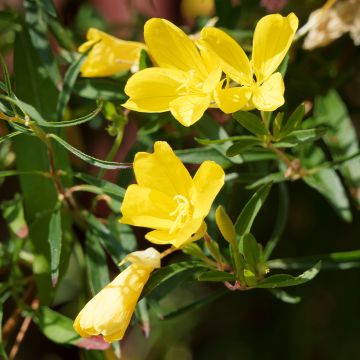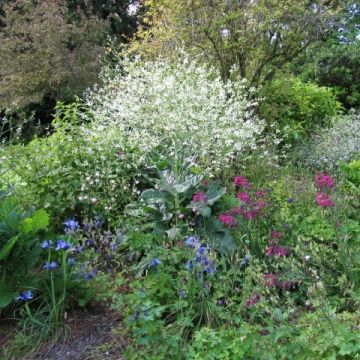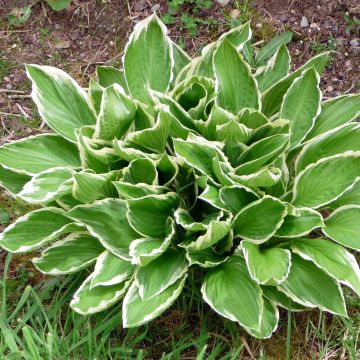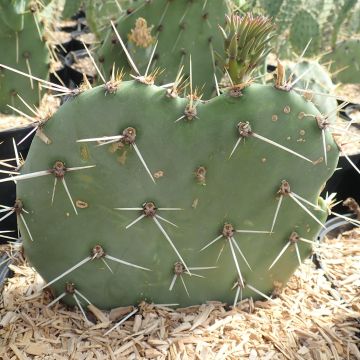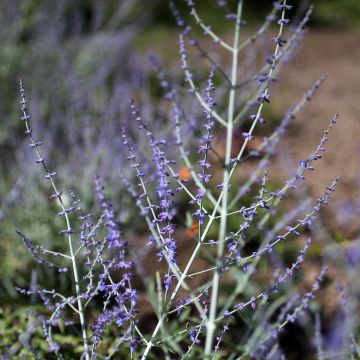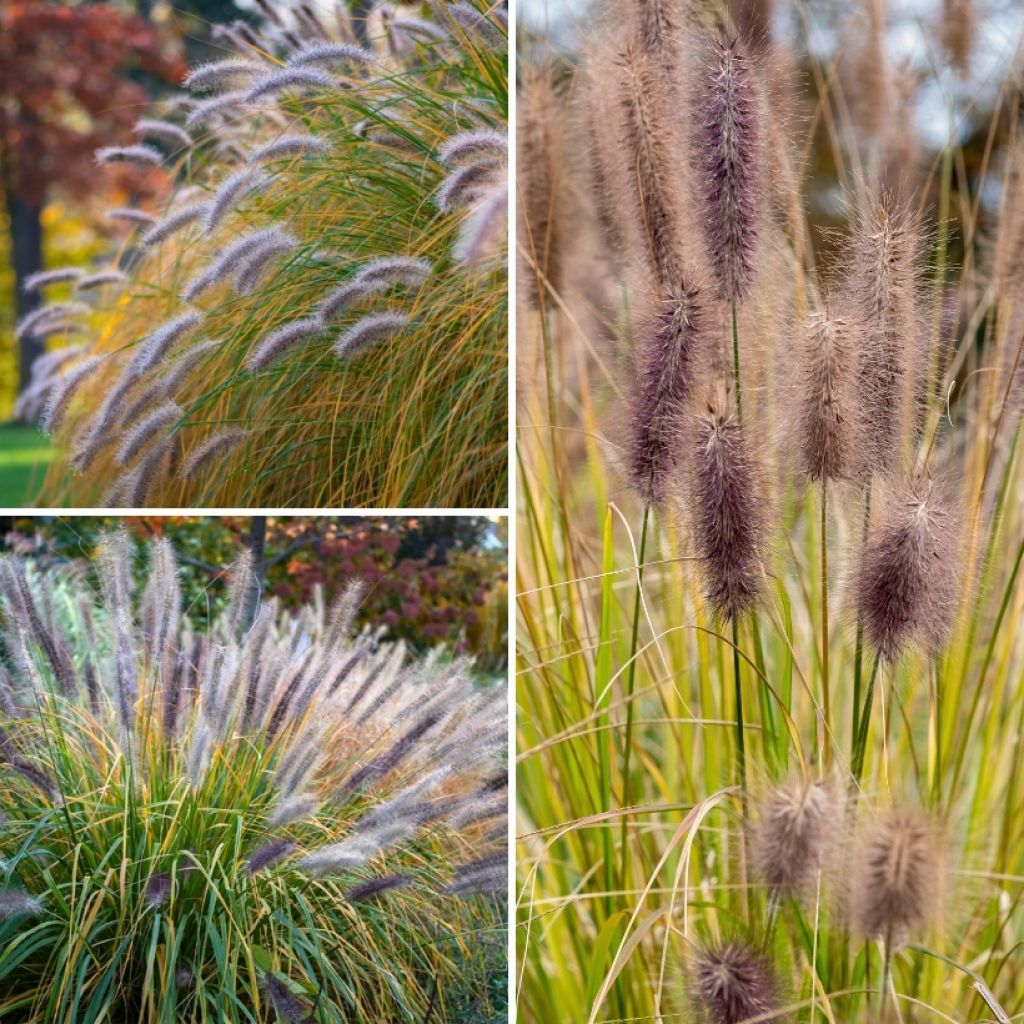

Pennisetum Collection - Chinese fountain grass
View more pictures
Hide images
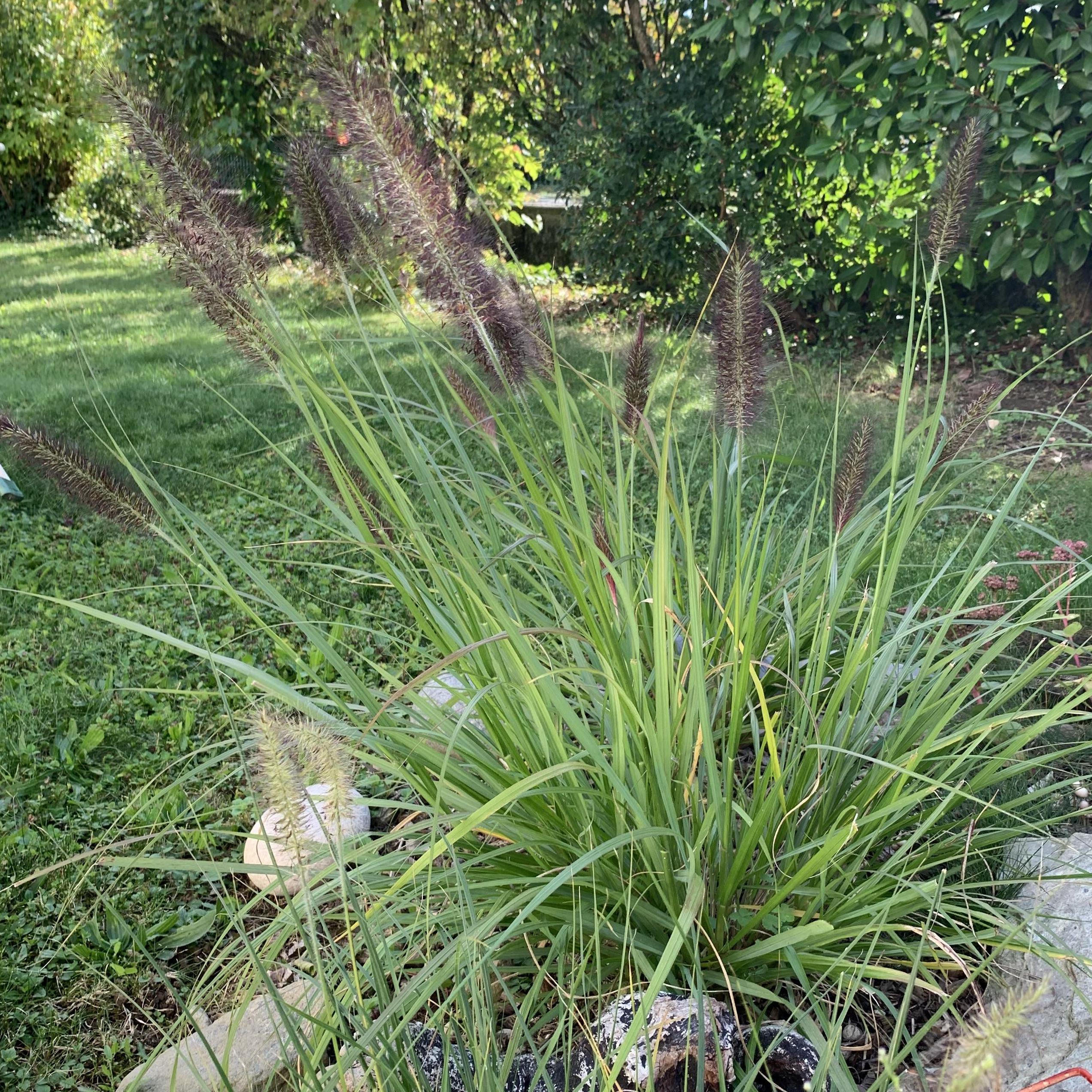
Martine D.

Martine D. • 74 FR
Pennisetum Collection - Chinese fountain grass
Pennisetum alopecuroïdes Hameln, Red Head, Black Beauty
Fountain Grass, Chinese Fountain Grass, Foxtail Fountain Grass, Swamp Foxtail Grass
Special offer!
Receive a €20 voucher for any order over €90 (excluding delivery costs, credit notes, and plastic-free options)!
1- Add your favorite plants to your cart.
2- Once you have reached €90, confirm your order (you can even choose the delivery date!).
3- As soon as your order is shipped, you will receive an email containing your voucher code, valid for 3 months (90 days).
Your voucher is unique and can only be used once, for any order with a minimum value of €20, excluding delivery costs.
Can be combined with other current offers, non-divisible and non-refundable.
Home or relay delivery (depending on size and destination)
Schedule delivery date,
and select date in basket
This plant carries a 12 months recovery warranty
More information
We guarantee the quality of our plants for a full growing cycle, and will replace at our expense any plant that fails to recover under normal climatic and planting conditions.
Would this plant suit my garden?
Set up your Plantfit profile →
Collection items (3 plants)
-
Pennisetum alopecuroides Hameln - Chinese Fountain Grass
Price per single item: 4,90 €Find out more -
Pennisetum alopecuroïdes Black Beauty - Chinese Fountain Grass
Price per single item: 5,90 €Find out more
Description
This collection features three different varieties of Pennisetum alopecuroides. These fountain grasses are cherished perennial grasses known for their natural elegance and feathery flowering spikes. They are perfect for adding movement to the garden. Their airy floral spikes emerge from fine foliage, gathered in a graceful tuft, from July to October. Cold-resistant and tolerant of moderate drought, these grasses are easy to care for. Their dense and bushy habit looks wonderful in borders, beds, or pots.
The collection consists of:
1 x Pennisetum alopecuroides 'Hameln': This compact variety reaches 50-60 cm in height. It is valued for its silver floral spikes that appear from July to September-October depending on the climate. Its soft green foliage turns golden in autumn.
1 x Pennisetum alopecuroides 'Red Head': Taller, reaching up to 90 cm, this variety offers spectacular purple floral spikes from August. Its dark green foliage remains dense and attractive throughout the season.
1 x Pennisetum alopecuroides 'Black Beauty': With nearly black spikes and a height of 1 m, this variety makes a significant impact. It flowers between late August and October, and its dark green foliage takes on purple hues in autumn.
Pennisetums are best planted in spring or autumn, in full sun, in well-drained, relatively rich, and not too dry soil. They thrive in beds, borders, or pots, where their graceful silhouette adds volume and movement. Position the 'Black Beauty' variety in the centre or at the back of the bed due to its height. The slightly more compact varieties, 'Hameln' and 'Red Head', can be planted in front. Space each young plant 50 cm apart to allow for harmonious growth. Count on 4 to 5 plants per m² for a mass effect.
To create a harmonious garden scene with this collection of Pennisetums, pair them with a wild daylily (Hemerocallis fulva), whose orange flowers will contrast beautifully with the dark spikes of the Pennisetums. Sedum spectabile 'Carl', with its intense pink flowering and fleshy foliage, will add a different texture and extend the beauty of the bed into autumn. Add Aster cordifolius 'Little Carlow', covered in small mauve stars that harmonise with the golden hues of the Pennisetums in autumn. Plant 3 wild daylilies in the foreground, 3 Sedum among the Pennisetums, and 3 asters to create a slightly blurred background. All the recommended plants above will occupy 4 to 5 m².
Flowering
Foliage
Plant habit
Botanical data
Pennisetum
alopecuroïdes
Hameln, Red Head, Black Beauty
Poaceae
Fountain Grass, Chinese Fountain Grass, Foxtail Fountain Grass, Swamp Foxtail Grass
Cenchrus alopecuroides Hameln, Red Head, Black Beauty
Cultivar or hybrid
Other Pennisetum
View all →Planting and care
Plant Pennisetum alopecuroides in a planting hole of 20 cm x 20 cm x 20 cm, in full sun. This plant prefers light, well-drained soils, moist to moderately dry, slightly acidic, neutral or even slightly chalky. If your soil is very clayey, mix in some coarse sand, gravel, and potting soil with the crumbled earth. Partially backfill and place your plant (after removing the pot) so that the top of the root ball of your young plant is covered with 3 cm of soil. Firm the soil and water generously to eliminate air pockets. If the weather is dry, you will need to water regularly for a few weeks to aid the recovery of your young plant.
Planting period
Intended location
Care
Planting & care advice
This item has not been reviewed yet - be the first to leave a review about it.
Similar products
Haven't found what you were looking for?
Hardiness is the lowest winter temperature a plant can endure without suffering serious damage or even dying. However, hardiness is affected by location (a sheltered area, such as a patio), protection (winter cover) and soil type (hardiness is improved by well-drained soil).

Photo Sharing Terms & Conditions
In order to encourage gardeners to interact and share their experiences, Promesse de fleurs offers various media enabling content to be uploaded onto its Site - in particular via the ‘Photo sharing’ module.
The User agrees to refrain from:
- Posting any content that is illegal, prejudicial, insulting, racist, inciteful to hatred, revisionist, contrary to public decency, that infringes on privacy or on the privacy rights of third parties, in particular the publicity rights of persons and goods, intellectual property rights, or the right to privacy.
- Submitting content on behalf of a third party;
- Impersonate the identity of a third party and/or publish any personal information about a third party;
In general, the User undertakes to refrain from any unethical behaviour.
All Content (in particular text, comments, files, images, photos, videos, creative works, etc.), which may be subject to property or intellectual property rights, image or other private rights, shall remain the property of the User, subject to the limited rights granted by the terms of the licence granted by Promesse de fleurs as stated below. Users are at liberty to publish or not to publish such Content on the Site, notably via the ‘Photo Sharing’ facility, and accept that this Content shall be made public and freely accessible, notably on the Internet.
Users further acknowledge, undertake to have ,and guarantee that they hold all necessary rights and permissions to publish such material on the Site, in particular with regard to the legislation in force pertaining to any privacy, property, intellectual property, image, or contractual rights, or rights of any other nature. By publishing such Content on the Site, Users acknowledge accepting full liability as publishers of the Content within the meaning of the law, and grant Promesse de fleurs, free of charge, an inclusive, worldwide licence for the said Content for the entire duration of its publication, including all reproduction, representation, up/downloading, displaying, performing, transmission, and storage rights.
Users also grant permission for their name to be linked to the Content and accept that this link may not always be made available.
By engaging in posting material, Users consent to their Content becoming automatically accessible on the Internet, in particular on other sites and/or blogs and/or web pages of the Promesse de fleurs site, including in particular social pages and the Promesse de fleurs catalogue.
Users may secure the removal of entrusted content free of charge by issuing a simple request via our contact form.
The flowering period indicated on our website applies to countries and regions located in USDA zone 8 (France, the United Kingdom, Ireland, the Netherlands, etc.)
It will vary according to where you live:
- In zones 9 to 10 (Italy, Spain, Greece, etc.), flowering will occur about 2 to 4 weeks earlier.
- In zones 6 to 7 (Germany, Poland, Slovenia, and lower mountainous regions), flowering will be delayed by 2 to 3 weeks.
- In zone 5 (Central Europe, Scandinavia), blooming will be delayed by 3 to 5 weeks.
In temperate climates, pruning of spring-flowering shrubs (forsythia, spireas, etc.) should be done just after flowering.
Pruning of summer-flowering shrubs (Indian Lilac, Perovskia, etc.) can be done in winter or spring.
In cold regions as well as with frost-sensitive plants, avoid pruning too early when severe frosts may still occur.
The planting period indicated on our website applies to countries and regions located in USDA zone 8 (France, United Kingdom, Ireland, Netherlands).
It will vary according to where you live:
- In Mediterranean zones (Marseille, Madrid, Milan, etc.), autumn and winter are the best planting periods.
- In continental zones (Strasbourg, Munich, Vienna, etc.), delay planting by 2 to 3 weeks in spring and bring it forward by 2 to 4 weeks in autumn.
- In mountainous regions (the Alps, Pyrenees, Carpathians, etc.), it is best to plant in late spring (May-June) or late summer (August-September).
The harvesting period indicated on our website applies to countries and regions in USDA zone 8 (France, England, Ireland, the Netherlands).
In colder areas (Scandinavia, Poland, Austria...) fruit and vegetable harvests are likely to be delayed by 3-4 weeks.
In warmer areas (Italy, Spain, Greece, etc.), harvesting will probably take place earlier, depending on weather conditions.
The sowing periods indicated on our website apply to countries and regions within USDA Zone 8 (France, UK, Ireland, Netherlands).
In colder areas (Scandinavia, Poland, Austria...), delay any outdoor sowing by 3-4 weeks, or sow under glass.
In warmer climes (Italy, Spain, Greece, etc.), bring outdoor sowing forward by a few weeks.

































